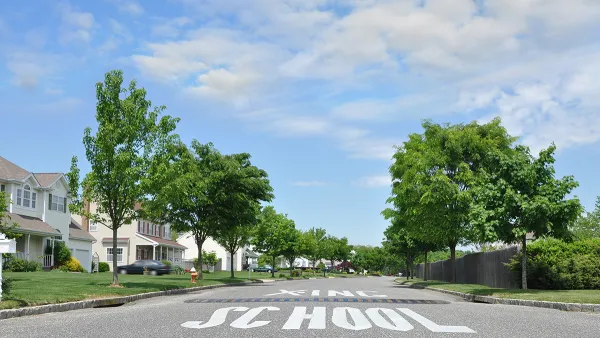Not only are suburbs growing, many of the larger, older cities that had reversed decades of population decline, are now losing population, again. The biggest losers: counties with the greatest population densities.
The U.S. Census Bureau released population estimates on March 23. The "data confirmed that suburban areas lead growth." To understand the relationship between county population density and population change based on residents leaving and arriving in counties, Mike Maciag, Governing's data editor, "compared the Census Bureau's updated domestic migration estimates for all counties within metro areas, which were then grouped by population density."
The 146 most densely populated counties lost a total of 539,000 residents to other parts of the country over the 12-month period ending in July, representing the largest decline in recent years.
Maciag details the population loss in St. Louis and Baltimore which have seen their more affluent suburbs grow.
Over the 12-month period ending in July, the city of St. Louis lost 1.1 percent of its population -- the largest decline of any large Census-designated county nationally. The steady stream of residents leaving has led to thousands of vacant homes and lots, particularly on the north side. The city's Land Reutilization Authority currently holds approximately 12,000 vacant properties, far more than comparable cities.
Central cities' losses are their suburbs' gains. Case in point, Baltimore.
A somewhat similar scenario is playing out in the city of Baltimore, where the population declined at the same rate. A net total of 11,000 residents moved out of the city -- many to surrounding suburban neighborhoods -- nearly doubling the domestic migration loss of the prior 12-month period.
“The suburbs in Baltimore are no more just middle-class professionals, they’re much more diverse,” says Andrew Cherlin, a Johns Hopkins University professor.
See the Census Bureau's press release for tables showing showing population growth and loss from July 1, 2015 to July 1, 2016
- Top 10 Largest-Gaining Counties (Numeric Change), led by Maricopa County, Arizona.
- Top 10 Fastest-Growing Counties (Percent Change, Counties With a Population of 10,000 or More), led by San Juan County, Utah.
- Top 10 Largest-Declining Counties or County Equivalents (Numeric Change), led by Cook County, Illinois.
- Top 25 Fastest-Growing Metro Areas (Percent Change), led by The Villages, Florida.
FULL STORY: Population Declines Accelerate in Many Large Urban Areas

National Parks Layoffs Will Cause Communities to Lose Billions
Thousands of essential park workers were laid off this week, just before the busy spring break season.

Retro-silient?: America’s First “Eco-burb,” The Woodlands Turns 50
A master-planned community north of Houston offers lessons on green infrastructure and resilient design, but falls short of its founder’s lofty affordability and walkability goals.

Delivering for America Plan Will Downgrade Mail Service in at Least 49.5 Percent of Zip Codes
Republican and Democrat lawmakers criticize the plan for its disproportionate negative impact on rural communities.

Test News Post 1
This is a summary

Test News Headline 46
Test for the image on the front page.

Balancing Bombs and Butterflies: How the National Guard Protects a Rare Species
The National Guard at Fort Indiantown Gap uses GIS technology and land management strategies to balance military training with conservation efforts, ensuring the survival of the rare eastern regal fritillary butterfly.
Urban Design for Planners 1: Software Tools
This six-course series explores essential urban design concepts using open source software and equips planners with the tools they need to participate fully in the urban design process.
Planning for Universal Design
Learn the tools for implementing Universal Design in planning regulations.
EMC Planning Group, Inc.
Planetizen
Planetizen
Mpact (formerly Rail~Volution)
Great Falls Development Authority, Inc.
HUDs Office of Policy Development and Research
NYU Wagner Graduate School of Public Service




























